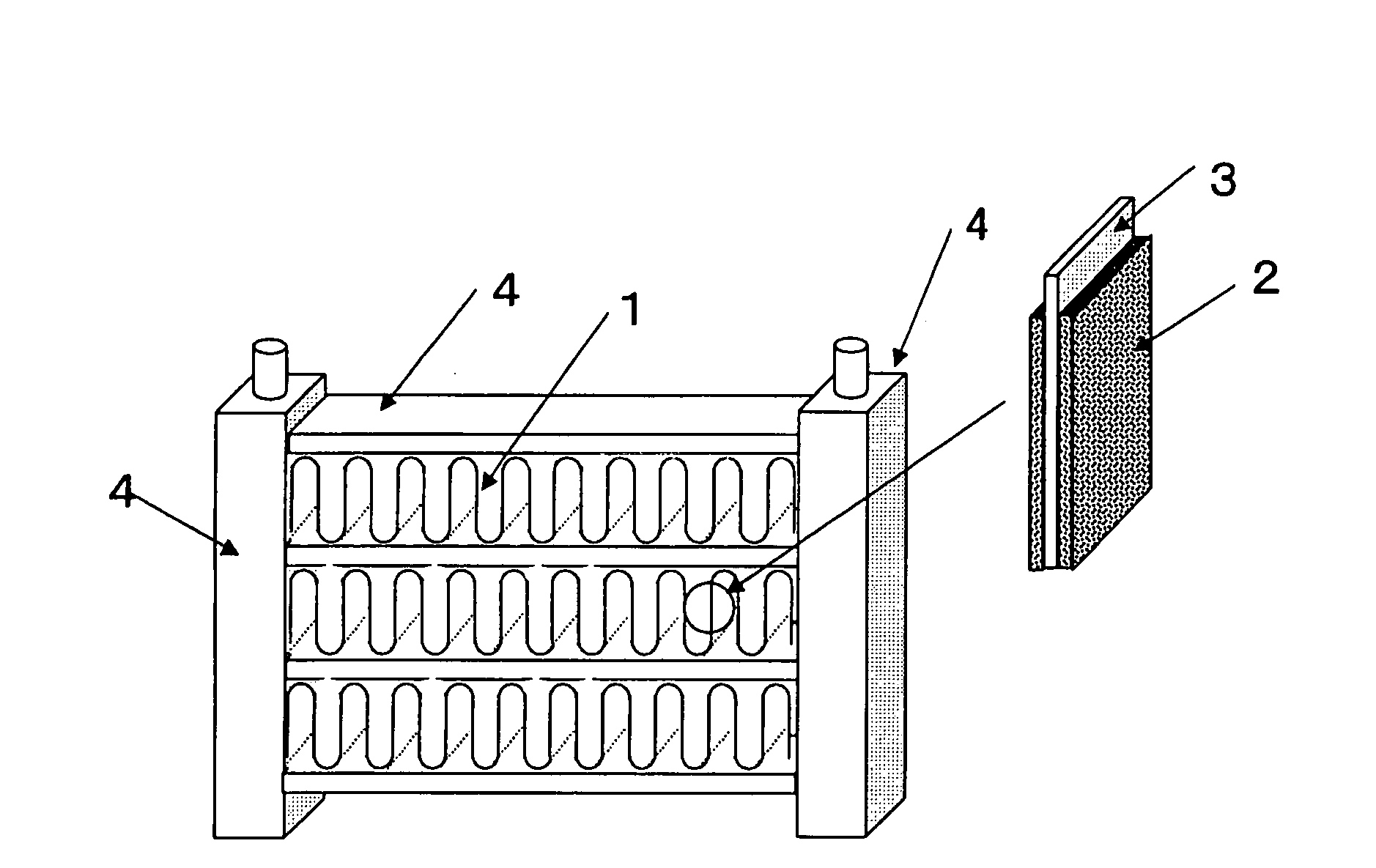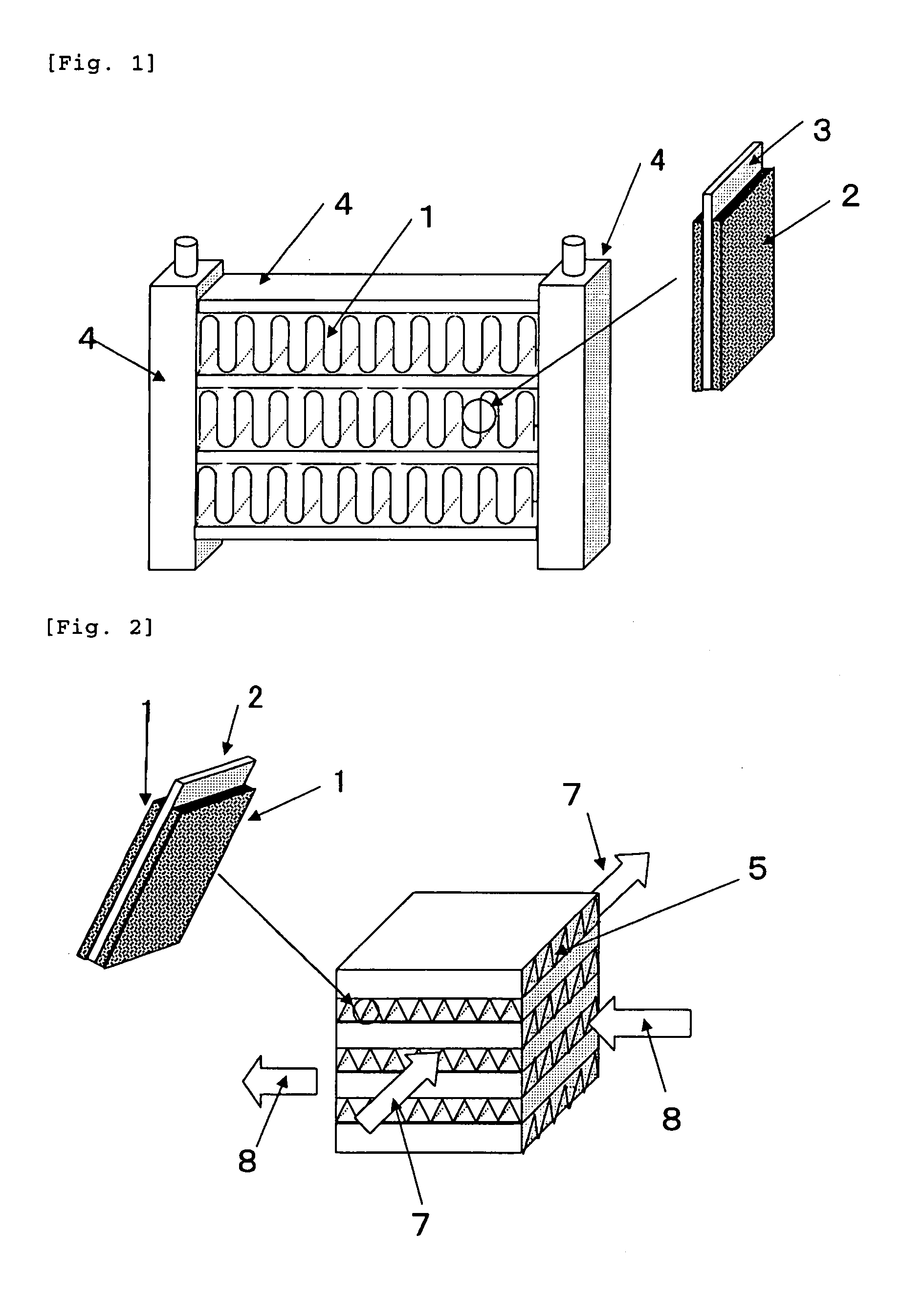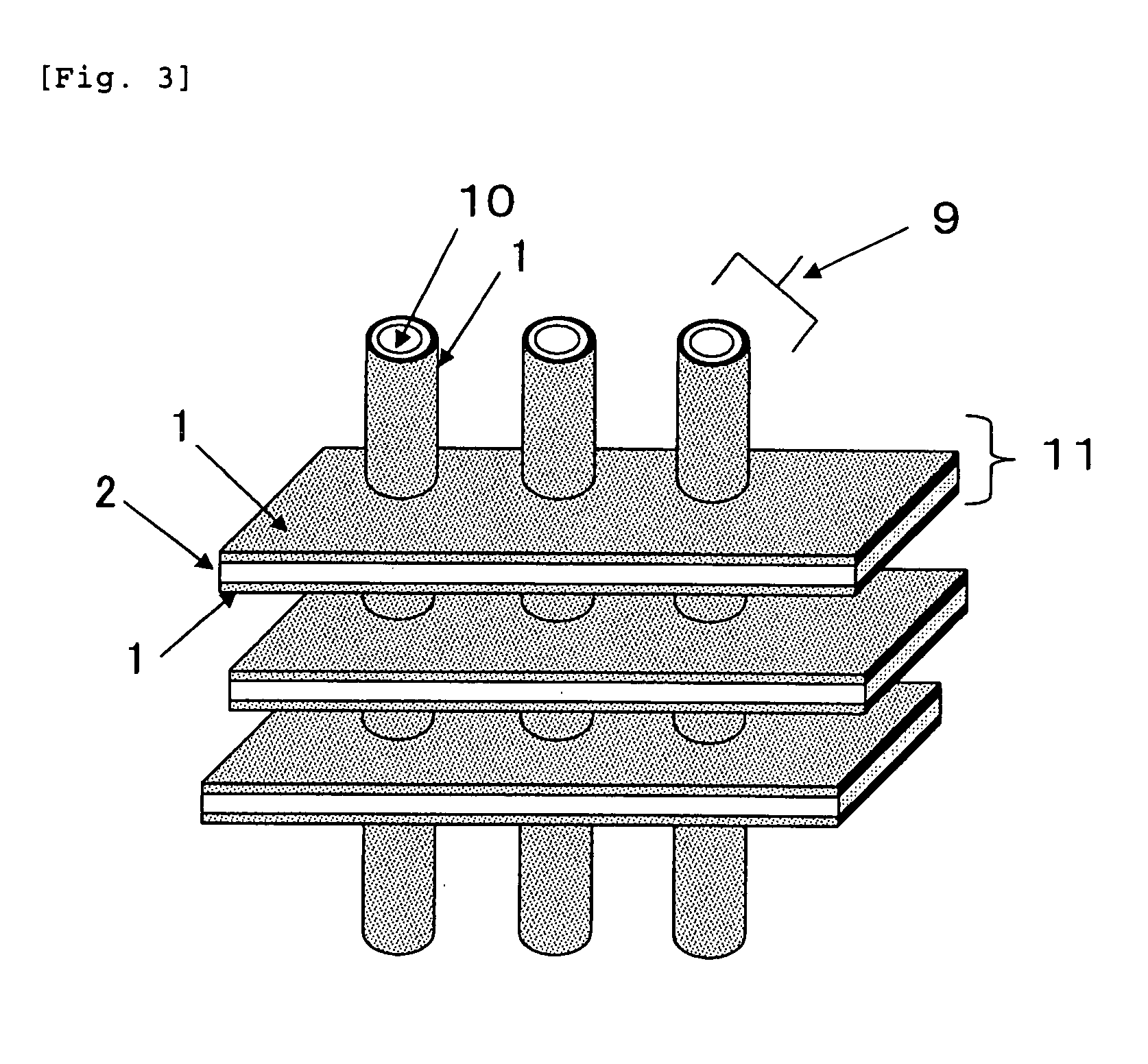Heat exchange module of a sorptive type and a method for the manufacture thereof
a heat exchange module and sorptive technology, applied in the field of sorptive heat exchange modules, can solve the problems of reducing heat transfer efficiency, poor heat conductivity, and property lowering, and achieve the effect of high heat exchange efficiency and excellent durability
- Summary
- Abstract
- Description
- Claims
- Application Information
AI Technical Summary
Benefits of technology
Problems solved by technology
Method used
Image
Examples
example 1
[0104]As a sorptive agent comprising an organic polymer having hydrophilic polar group and cross-linking structure in a molecule, Amberlite IR120B which is an ion-exchange resin manufactured by Organo was used. Since average particle diameter of said sorptive agent was as big as 0.5 mm, said particles were firstly dried and then ground using a gas stream atomizer to give fine powder of sorptive agent of a polymer type where average particle diameter as a primary particle was 4 μm.
[0105]Ethylene glycol monobutyl ether (406 parts) was charged in a four-necked flask equipped with thermometer, dropping funnel and stirrer and heated at 100° C. in a nitrogen stream, then a mixture of 196 parts of acrylic acid, 49 parts of 2-hydroxyethyl acrylate, 35 parts of ethylene glycol monobutyl ether and 14 parts of 2,2′-azobisisobutyronitilre was dropped thereinto from a dropping funnel during 3 hours at that temperature and then the mixture was stirred at the same temperature for 2 hours more afte...
example 2
[0109]Water (1,081 parts) was placed in a two-liter polymerization tank, temperature was raised up to 60° C. and 6.2 parts of sodium pyrosulfite was added as a reducing agent. After that, each of a solution of a monomer mixture of 450 parts of acrylonitrile and 50 parts of methyl acrylate and an aqueous solution of oxidizing agent where 5 parts of ammonium persulfate was dissolved in 100 parts of water was dropped thereinto during 2 hours to conduct polymerization, then temperature was raised up to 80° C. and an after-polymerization was carried out for 2 hours. After completion of the reaction, temperature was lowered down to room temperature together with stirring to give a dispersion of porous acrylonitrile-type polymer which is an aggregate where an average particle diameter was 42 μm. When the primary particles of the aggregate were observed under an electron microscope, its average particle diameter was 0.3 μm.
[0110]After that, 100 parts of the resulting polymer was mixed with ...
example 3
[0113]Sodium lauryl sulfate (1 part), 3 parts of ammonium persulfate and 350 parts of deionized water were charged in a reactor. Then the reactor was raised up to 70° C. temperature and 35 parts of methyl acrylate (referred to as MA), 40 parts of butyl acrylate, 15 parts of divinylbenzene, 5 parts of methacrylic acid, 5 parts of sodium p-styrenesulfonate, 3 parts of polyethylene glycol (23 mol) monoacrylate and 50 parts of deionized water were dropped into the reactor together with stirring at 70° C. to start the polymerization. The dropping speed was adjusted so that dropping of those monomers finished within 30 minutes. After finishing the dropping, the mixture was kept at the same condition for 2 hours to conduct the polymerization. The polymer emulsion prepared as such contained 21% solid and its average particle diameter was as very fine as 0.03 μm.
[0114]To 480 parts of the resulting polymer emulsion was added a solution where 45 parts of potassium hydroxide was dissolved in 47...
PUM
| Property | Measurement | Unit |
|---|---|---|
| pore diameter | aaaaa | aaaaa |
| specific surface area | aaaaa | aaaaa |
| RH | aaaaa | aaaaa |
Abstract
Description
Claims
Application Information
 Login to View More
Login to View More - R&D
- Intellectual Property
- Life Sciences
- Materials
- Tech Scout
- Unparalleled Data Quality
- Higher Quality Content
- 60% Fewer Hallucinations
Browse by: Latest US Patents, China's latest patents, Technical Efficacy Thesaurus, Application Domain, Technology Topic, Popular Technical Reports.
© 2025 PatSnap. All rights reserved.Legal|Privacy policy|Modern Slavery Act Transparency Statement|Sitemap|About US| Contact US: help@patsnap.com



